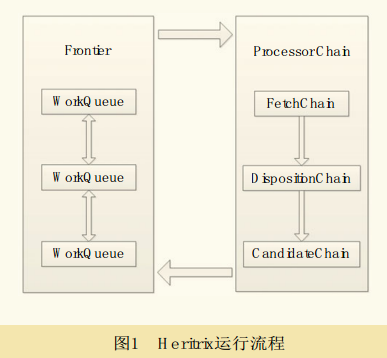Spring Boot定时任务单线程多线程实现代码解析
1、创建定时任务:
@Componentpublic class AutoNotifyController { /** * 获取RedisUtils注入的bean * * @return */ private ThreadUtil getThreadUtil() { ThreadUtil threadUtil = SpringContextUtil.getBean('threadUtil'); return threadUtil; } /** * @描述: 推送启动充电结果的自动获取和处理分发方法 * @输入值: void * @返回值: void */ @Scheduled(cron = '*/5 * * * * ?') public void AutoNotifyStartChargeResult() { getThreadUtil().AutoNotifyStartChargeResult(); } /** * @描述: 推送充电状态的自动获取和处理分发方法 * @输入值: void * @返回值: void */ @Scheduled(cron = '*/50 * * * * ?') public void AutoNotifyChargeStatus() { getThreadUtil().AutoNotifyChargeStatus(); } /** * @描述: 推送停止充电结果的自动获取和处理分发方法 * @输入值: void * @返回值: void */ @Scheduled(cron = '*/5 * * * * ?') public void AutoNotifyStopChargeResult() { getThreadUtil().AutoNotifyStopChargeResult(); } /** * @描述: 推送订单信息的自动获取和处理分发方法 * @输入值: void * @返回值: void */ @Scheduled(cron = '*/5 * * * * ?') public void AutoNotifyOrderInfo() { getThreadUtil().AutoNotifyOrderInfo(); } /** * @描述: 公共信息部分的设备状态变化推送接口的自动获取和处理分发方法 * @输入值: void * @返回值: void */ @Scheduled(fixedRate = 200) public void checkGunStatus() { getThreadUtil().checkGunStatus(); } /** * @描述: 对于Redis中的活跃订单增加和删除的轮询执行方法 */ @Scheduled(cron = '*/5 * * * * ?') public void ActiveOrderAddAndDelete() { getThreadUtil().ActiveOrderAddAndDelete(); } /** * @描述: 对于Redis中的结束订单订单增加和删除的轮询执行方法 */ @Scheduled(cron = '*/5 * * * * ?') public void EndOrderAddAndDelete() { getThreadUtil().EndOrderAddAndDelete(); }}
使用 @Scheduled来创建定时任务 这个注解用来标注一个定时任务方法。
通过看 @Scheduled源码可以看出它支持多种参数:
(1)cron:cron表达式,指定任务在特定时间执行;
(2)fixedDelay:表示上一次任务执行完成后多久再次执行,参数类型为long,单位ms;
(3)fixedDelayString:与fixedDelay含义一样,只是参数类型变为String;
(4)fixedRate:表示按一定的频率执行任务,参数类型为long,单位ms;
(5)fixedRateString: 与fixedRate的含义一样,只是将参数类型变为String;
(6)initialDelay:表示延迟多久再第一次执行任务,参数类型为long,单位ms;
(7)initialDelayString:与initialDelay的含义一样,只是将参数类型变为String;
(8)zone:时区,默认为当前时区,一般没有用到。
2、开启定时任务:
@SpringBootApplication@EnableSchedulingpublic class PositivebuttjointApplication extends SpringBootServletInitializer{ public static void main(String[] args) { SpringApplication.run(PositivebuttjointApplication.class, args); }
注:这里的 @EnableScheduling 注解,它的作用是发现注解 @Scheduled的任务并由后台执行。没有它的话将无法执行定时任务。
引用官方文档原文:
@EnableScheduling ensures that a background task executor is created. Without it, nothing gets scheduled.
3、执行结果(单线程)
就完成了一个简单的定时任务模型,下面执行springBoot观察执行结果:

从控制台输入的结果中我们可以看出所有的定时任务都是在同一个线程池用同一个线程来处理的,那么我们如何来并发的处理各定时任务呢,请继续向下看。
4、多线程处理定时任务:
1.开启多线程
@SpringBootApplication@EnableScheduling@EnableAsyncpublic class PositivebuttjointApplication extends SpringBootServletInitializer{ public static void main(String[] args) { SpringApplication.run(PositivebuttjointApplication.class, args); }
加入@EnableAsync开启多线程
2.使用多线程
@Async public void AutoNotifyStartChargeResult() { }
调用的方法上加上@Async使用多线程
3.配置连接池
@Configurationpublic class ScheduleConfiguration implements SchedulingConfigurer { @Override public void configureTasks(ScheduledTaskRegistrar taskRegistrar) { taskRegistrar.setScheduler(this.getTaskScheduler()); } private ThreadPoolTaskScheduler getTaskScheduler() { ThreadPoolTaskScheduler taskScheduler = new ThreadPoolTaskScheduler(); taskScheduler.setPoolSize(20); taskScheduler.setThreadNamePrefix('schedule-pool-'); taskScheduler.initialize(); return taskScheduler; }}
以上就是本文的全部内容,希望对大家的学习有所帮助,也希望大家多多支持好吧啦网。
相关文章:

 网公网安备
网公网安备